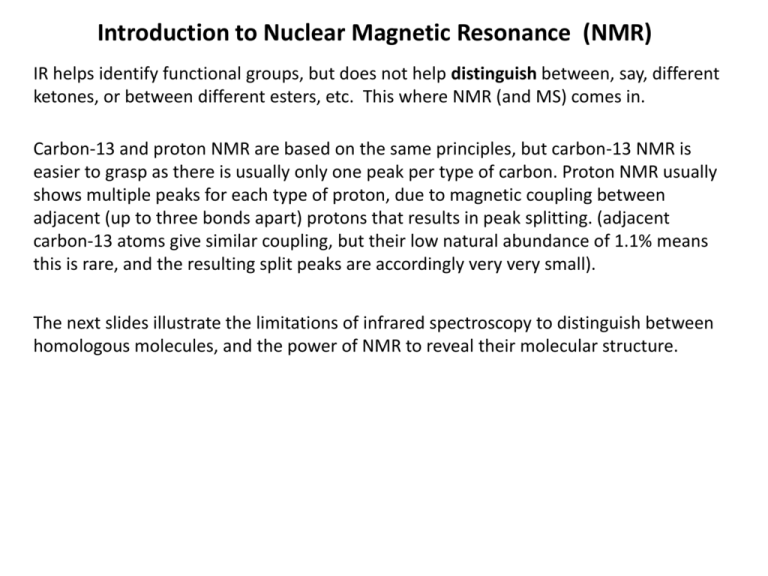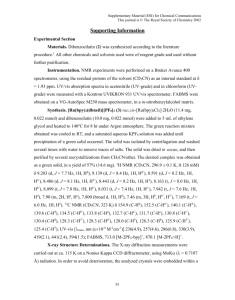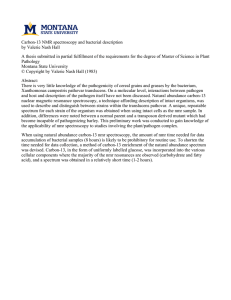Introduction to Nuclear Magnetic Resonance (NMR)
advertisement

Introduction to Nuclear Magnetic Resonance (NMR) IR helps identify functional groups, but does not help distinguish between, say, different ketones, or between different esters, etc. This where NMR (and MS) comes in. Carbon-13 and proton NMR are based on the same principles, but carbon-13 NMR is easier to grasp as there is usually only one peak per type of carbon. Proton NMR usually shows multiple peaks for each type of proton, due to magnetic coupling between adjacent (up to three bonds apart) protons that results in peak splitting. (adjacent carbon-13 atoms give similar coupling, but their low natural abundance of 1.1% means this is rare, and the resulting split peaks are accordingly very very small). The next slides illustrate the limitations of infrared spectroscopy to distinguish between homologous molecules, and the power of NMR to reveal their molecular structure. Chapter 2 10 Carbon-13 NMR Proton NMR four protons four protons Carbon-13 NMR Proton NMR six protons four protons Illustration for the need to characterize closely related compounds Extract of stingers of africanized honey bee O G.J. Hunt et al, DISCOVERY OF 3-METHYL-2-BUTEN-1-YL ACETATE, A NEW ALARM COMPONENT IN THE STING APPARATUS OF AFRICANIZED HONEYBEES Journal of Chemical Ecology, Vol. 29, No. 2, February 2003 (°C 2003) O O O O O O O Retention time in gas chromatogram [minutes] H2SO4 O OH HO heat O O Butyl acetate H2SO4 O OH HO O O Isopentyl acetate heat Carbon-13 NMR O O Proton NMR 3 protons Carbon-13 NMR 4 protons 3 protons 2 protons Proton NMR Carbon-13 NMR O O Proton NMR C8H10 C8H10 C7H9NO C8H12O2






